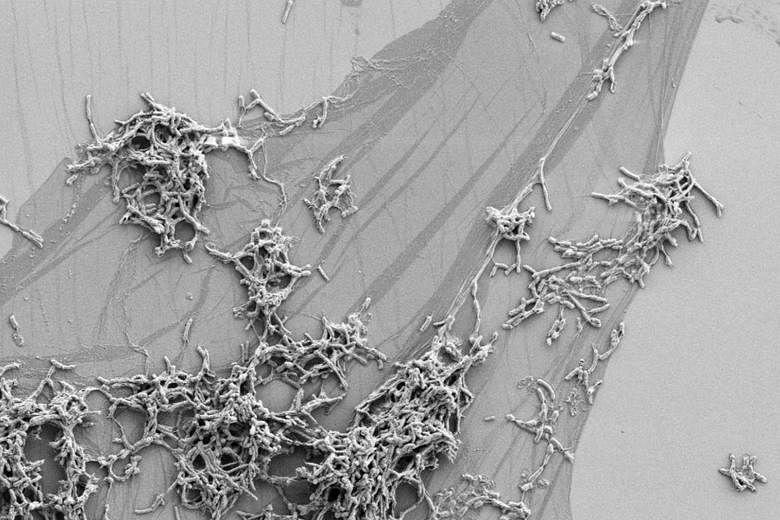Salmonella bacteria can cause vomiting, diarrhoea and even typhoid fever very soon after it enters the body. But it can also stay dormant - for about a decade- without showing any symptoms.
What has got scientists interested recently is that cancer-causing tumours shrinks when dormant salmonella stick to their surfaces.
Now, researchers at the Mechanobiology Institute at the National University of Singapore have found a molecular switch which determines whether the bacteria remains dormant or infectious in the body. The findings were published last month in scientific journal eLife.
Led by Senior Research Fellow Stuti Desai and Principal Investigator Linda Kenney from the institute, the study found that when the protein called SsrB is "switched off", it activates the dormant salmonella.
When it grows as a biofilm which can stick to gallstones, or even tumours, the bacteria becomes dormant and does not produce any symptoms.
In the 1900s, there was the case of "Typhoid Mary" - a cook named Mary Mallon, who spread typhoid-causing salmonella to nearly 100 people over a decade although she was asymptomatic.
It is now thought that she was carrying dormant salmonella on gallstones in her gall bladder, said the researchers.
"Salmonella can stay dormant for a year or more on kitchen cutting boards, and has been reported to remain dormant for up to 10 years in a food processing factory, despite intensive cleaning and decontamination," said Professor Kenney.
"When salmonella is expelled from the body it remains alive for some time and is capable of continuing to spread infection."
Work is currently being done to find out in greater detail the inactive state of the protein SsrB, said Dr Stuti.
Understanding this would enable researchers to use the protein SsrB to control salmonella.
Separately, Dr Stuti and Prof Kenney are also working with other researchers in Singapore and Germany to find out more on how salmonella targets and reduces tumours.
Already, the effectiveness of Salmonella biofilms has been observed in mouse models of various cancers including prostate and ovarian cancers, said Dr Stuti.
But, she added, more needs to be understood about how it works.


